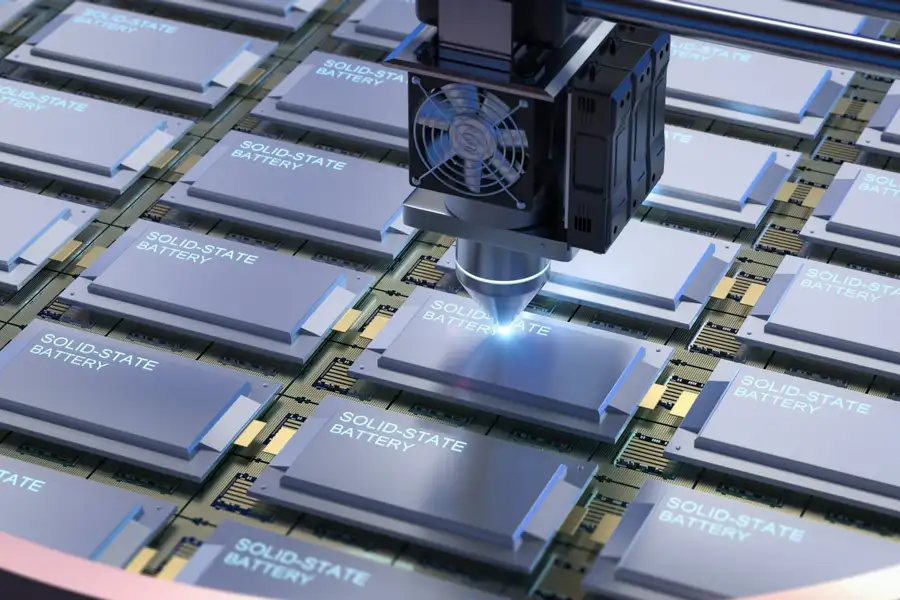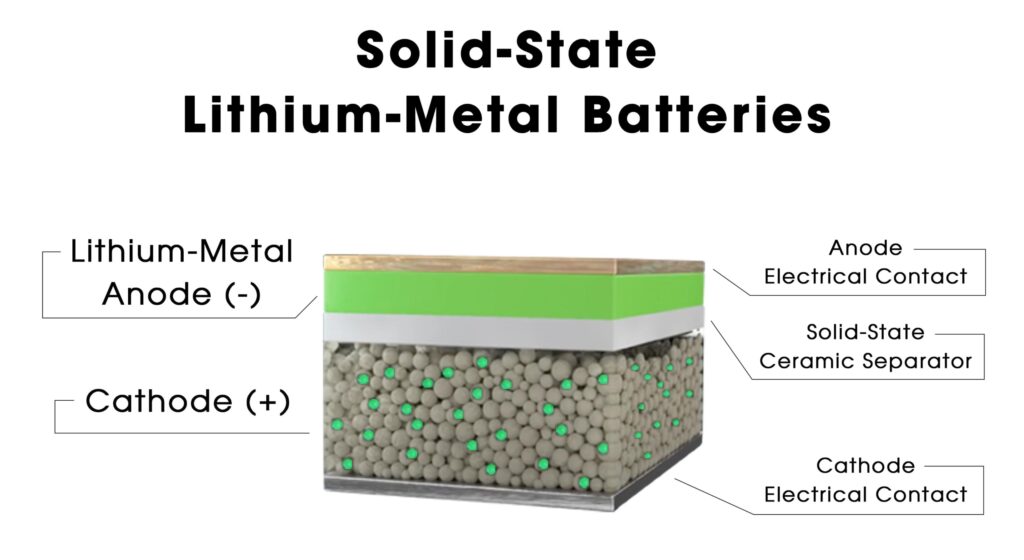
Solid-State Batteries: Why & How
Solid electrolyte batteries sound great in theory, but making them affordable has been a tough challenge
Toyota claims they’ve cracked it – they’re planning to start making revolutionary solid-state batteries by 2028. These batteries will be lighter, more powerful, and could give electric cars a 1200-kilometer range with just a 10-minute charge. But, is it wise to be overly optimistic about them?

What are solid-state batteries?
The batteries we use in our phones, laptops, and electric cars are called lithium-ion batteries. They have a liquid inside them that lets tiny particles move in and out to store and release energy.
Now, there’s something called solid-state batteries. These don’t have liquid; instead, they use a solid material.
In a regular lithium-ion battery, there’s a kind of pen-like thing called an electrode made of graphite, another electrode made of metal oxide, and a liquid with lithium in it.
In solid-state batteries, instead of lithium, they use different materials like ceramics and sulphides to do the job.

Why is ditching a liquid electrolyte useful?
Even though some solid-state batteries still use lithium, there’s a big advantage in not needing it. Lithium is hard to find, and mining it harms the environment. This problem is getting worse as the world moves from fossil fuels to renewable energy stored in batteries.
Solid-state batteries have other advantages too. They don’t have the liquid that can cause fires in regular batteries. Plus, they charge faster.
Regular lithium batteries charge quickly up to 80%, but slow down to reach 100%. Solid-state batteries can reach full charge more quickly.
The most important part is that solid electrolytes are lighter. So, a solid-state battery can be smaller and lighter than a regular lithium one.
This could make electric cars smaller and lighter, or give them more range for the same size and weight. With more energy and less weight, electric planes might also become a realistic option.
How far away are they?
Solid-state batteries have been around for a long time. Michael Faraday invented solid electrolytes back in the 1800s, and they’re already used in medical devices. However, making them cheaply has been a challenge.
Because of their clear advantages, car companies are investing in research. For instance, Ford & BMW have put money into a company name Solid Power.
They plans to make enough batteries for 800,000 cars a year by 2028. Mercedes-Benz is also backing a company called Factorial Energy.
Recently, Toyota made some bold claims. They’ve partnered with a Japanese petroleum company, Idemitsu Kosan, which is working on a special type of solid electrolyte called a “sulphide.”
They aim to start making solid-state batteries for cars in 2027-28, with larger-scale production happening later.

Industry often keeps its findings hidden due to competition, but academia has made significant progress too. Earlier this year, researchers at the Chinese Academy of Sciences in Beijing showed that solid-state lithium-sulphur batteries can last a long time, recharging them 1400 times.
NASA has also created a solid battery using stacked sulfur and selenium cells, claiming it can reduce weight by 40% & increase energy capacity threefold.
However, these promising developments haven’t resulted in actual products yet. Toyota’s announcement adds it to the list of companies betting on solid-state batteries. It remains to be seen which company will succeed first and how much these new batteries can enhance technology.
Never miss any important news. Subscribe to our newsletter.
Related News


British Investor Who Predicted US Slump Warns of Next Crash

I’m a Death Doula: 4 Reasons I Believe Death Isn’t the End


Tech to Reverse Climate Change & Revive Extinct Species

AI Unlocks the Brain’s Intelligence Pathways

XPENG Unveils Iron Robot with 60 Human-like Joints

Can AI Outsmart Humanity?

11 ChatGPT Prompts to Boost Your Personal Brand

Keir Starmer Hints at Possible Tax Hikes on Asset Income

Navigating the Future of AI: Insights from Eric Schmidt
